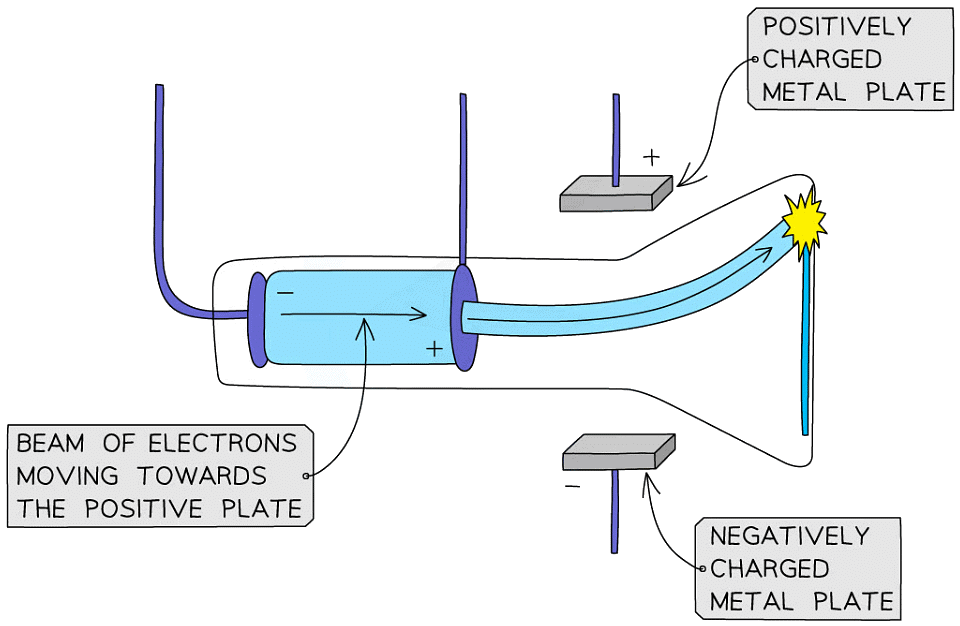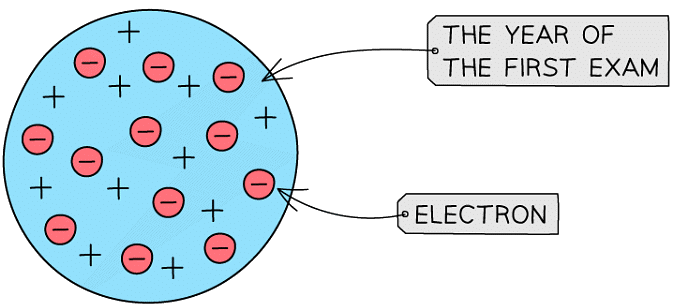Grade 10 Exam > Grade 10 Notes > Chemistry for Grade 10 > History of the Atom
History of the Atom | Chemistry for Grade 10 PDF Download
Atoms & Scientific Models
- The atomic model developed by scientists has changed over time as experimental evidence has improved our understanding of the structure of atoms
- In 1803, John Dalton presented his atomic theory based on three key ideas:
- Matter is made of atoms which are tiny particles that cannot be created, destroyed, or divided
- Atoms of the same element are identical, and atoms of different elements are different
- Different atoms combine together to form new substances
- At the time, the theory was correct but as science developed some parts of Dalton's theory were disproved
- This is a fundamental feature of science: new experimental evidence may lead to a scientific model being changed or replaced
 The evolution of models of atomic structure
The evolution of models of atomic structure
The Plum Pudding Model
- In 1897, physicist J.J. Thomson discovered the electron
- Using a cathode-ray tube, he conducted an experiment which identified the electron as a negatively charged subatomic particle, hence proving that atoms are divisible

Diagram showing an electron beam deflecting towards the positive plate, proving electrons are negatively charged
- Based on his investigations, Thomson proposed a model of the atom known as the plum pudding model which depicted negative electrons spread throughout soft globules of positively charged material

Diagram showing the plum pudding model of the atom
Rutherford Scattering
- In 1909, Ernest Rutherford presented his model of the atom based on the famous gold foil experiment
- Rutherford shot a beam of positively charged particles at a thin sheet of gold foil and based on the plum pudding model, expected the particles to pass through the foil because the positive charge of the nucleus was thought to be evenly spread out
- Some particles were scattered, however, and a few were deflected directly back, which led him to postulate that most of an atom's mass is concentrated in a region of space at the centre of the atom called the nucleus
- The results of Rutherford’s scattering experiments did not support the idea that atoms were as described in the plum pudding model, so the model had to be changed
- In Rutherford's model, the atom consists mainly of empty space with the nucleus at the centre and the electrons orbiting in paths around the nucleus
- This model was known as the nuclear model of the atom

Diagram showing Ernest Rutherford's nuclear model of the atom
- In the plum pudding model, atoms were described as being made from electrons embedded within a positive sphere, whereas in the nuclear model the nucleus is a positive structure at the centre of the atom, with negative (and much smaller) electrons ‘orbiting’ around the outside of it
The Bohr Model
- In 1913, Niels Bohr further developed the nuclear model by proposing that electrons orbit the nucleus in fixed shells or orbitals located at set distances from the nucleus
- Each orbital has a different energy associated with it, with the higher energy orbitals being located further away from the nucleus
- This model solved the question of why the atom does not collapse inwards due to the attraction between the positive nucleus and negative electrons circling the nucleus
- Bohr’s theory and calculations agreed with experimental results
- Further investigation and experimentation revealed that the nucleus could be divided into smaller particles, each one having the same mass and charge
- This work led to the discovery of the proton

Diagram showing Niels Bohr’s model of the atom
The Discovery of the Neutron
- In 1920, Rutherford put forward the idea of the existence of large, neutral particles within the nucleus
- His idea was based on the differences between the atomic mass and the atomic number of atoms
- In 1932, James Chadwick published a paper based on an experiment carried out by Frédéric and Irène Joliot-Curie which provided evidence for the existence of these neutral particles which were called neutrons
The document History of the Atom | Chemistry for Grade 10 is a part of the Grade 10 Course Chemistry for Grade 10.
All you need of Grade 10 at this link: Grade 10
|
75 videos|131 docs|24 tests
|
Related Searches




















